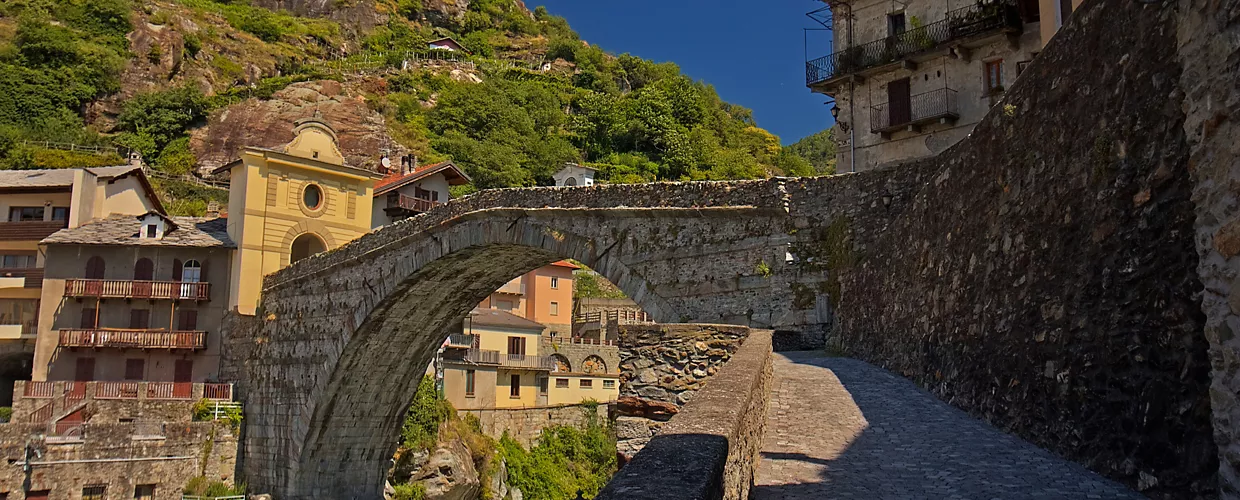This content was automatically translated. View the original text.

Overview
In Pont-Saint-Martin, a miracle of Roman engineering
At the entrance to the Aosta Valley, at Pont-Saint Martin, stands one of the most extraordinary single-span Roman bridges. Built during the empire of Augustus, it was part of the Roman Via delle Gallie, important consular road that allowed year-round transit of the Alps. Also known as the “devil's bridge”, a legend developed around its construction is still present in local folklore today.
Cross it on foot
The Roman stone bridge is located over the Lys, the stream descending from the Gressoney valley. Built in the 1st century BC by the Romans, with a single span, about 36 metres long and 25 metres high, and an extremely thin vault arch, it is considered one of the largest, most daring bridges of antiquity among the miracularia of Roman engineering.
Anchored to the live rock on both banks, it was in continuous use until 1836, when another bridge was built that could relieve Pont-Saint-Martin of its primary function to become only a monument, symbol of an area whose history it marked. Today, the bridge can be crossed on foot through Via Roma and admired from the riverside, from which the architecture and the bulk of the bridge can be seen at its best.
The legend of St Martin
We do not know the original Roman name of the bridge, just the one it was given, probably between the 4th and the 5th century, linked to the legend of St Martin, celebrating the myth of the construction of an architectural work that must have appeared extraordinary to the native population, until then at the mercy of precarious wooden footbridges to cross the stream.
This legend tells of the time when St Martin, stranded on the Lys by a flood that swept away the footbridge, made a pact with the devil who promised him to build a solid stone bridge overnight, in exchange for the soul of whoever crossed it first. Once completed, the cunning St Martin tricked the devil by making a small dog walk on the bridge. Even today, the legend is re-enacted ending with the burning of the devil under the bridge for the historical carnival of Pont-Saint-Martin
A museum dedicated to the Devil's Bridge
A pleasant village has developed around the Roman bridge, dominated by the presence of the ruins of an 11th-century castle, known as the Castellaccio, and the neo-Gothic Baraing Manor (1883), now the headquarters of the Mountain Community. The bridge is dedicated to a small museum where you can learn more about construction techniques, materials, history, restoration and other curiosities related to its 2,000-year history.
11026 Pont-Saint-Martin AO, Italia